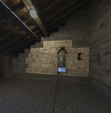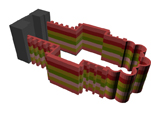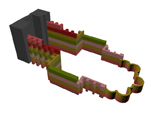Masons at Work
Chris Henige
University of Wisconsin-Whitewater

Chris Henige
University of Wisconsin-Whitewater
The Contractors of Chartres Revisited
Thirty years ago John James published the Contractors of Chartres, in which he presented his extensive research on the fabric of the great cathedral, and proposed that the resulting building must have been the result of a series of different crews coming to the site for a season, and then leaving, only to return several years later. This theory of “consecutive contracting” met with considerable resistance, because it flew in the face of the conventional view of building practices in the Middle Ages. Nevertheless, the evidence James gathered demonstrates clearly the presence of multiple template makers in discrete portions of the building, each bringing their own “dossier”, their individual approach to measure and geometry. Could this only have resulted from “consecutive contracting” or is it possible that these different crews were working on the site at the same time, reflecting a system of “concurrent contracting”? This paper explores how the special circumstances of large building sites might by necessity have required “concurrent contracting”, and presents a model for site management that could have resulted in the peculiar combination of individual dossiers that can be discerned in the fabrics of larger medieval church buildings.


